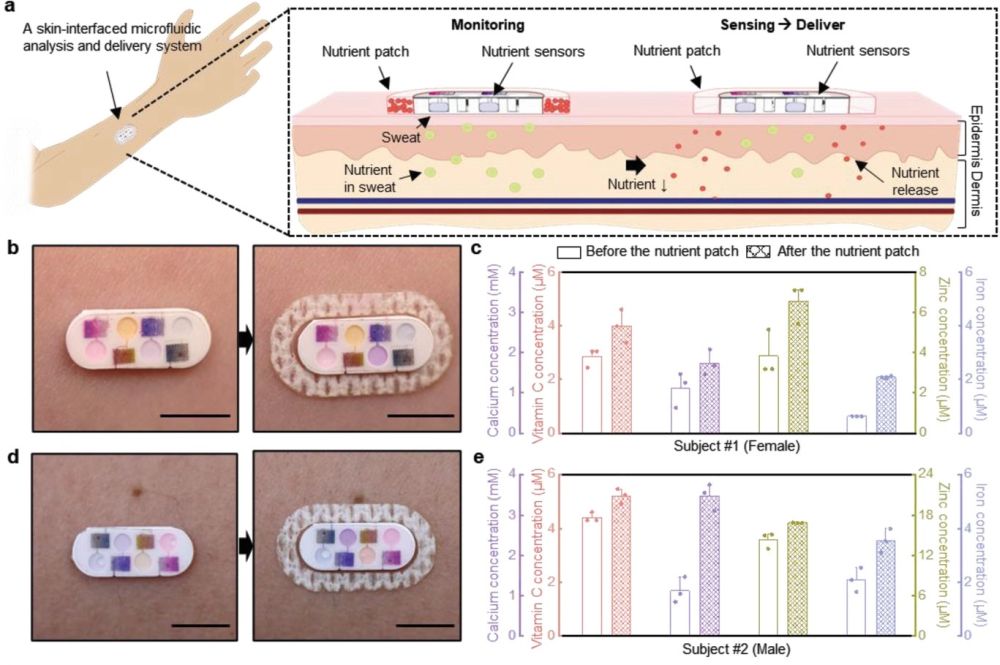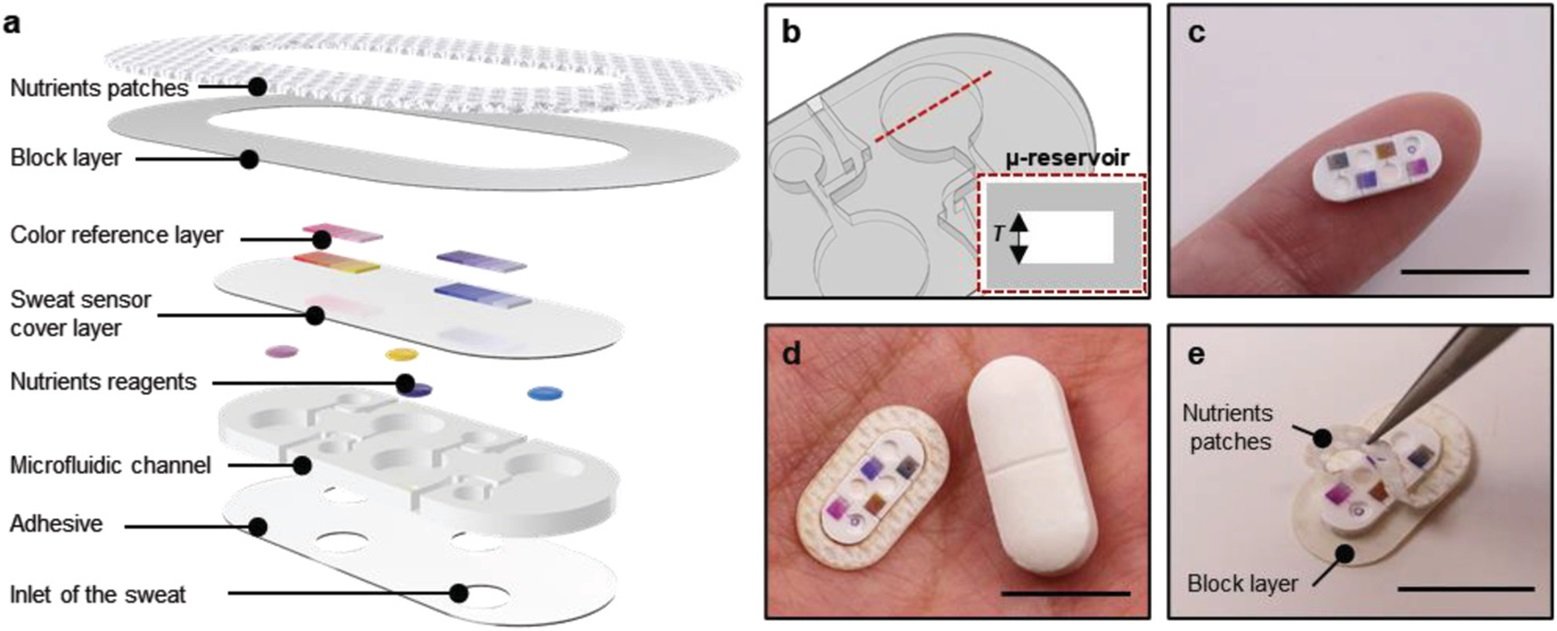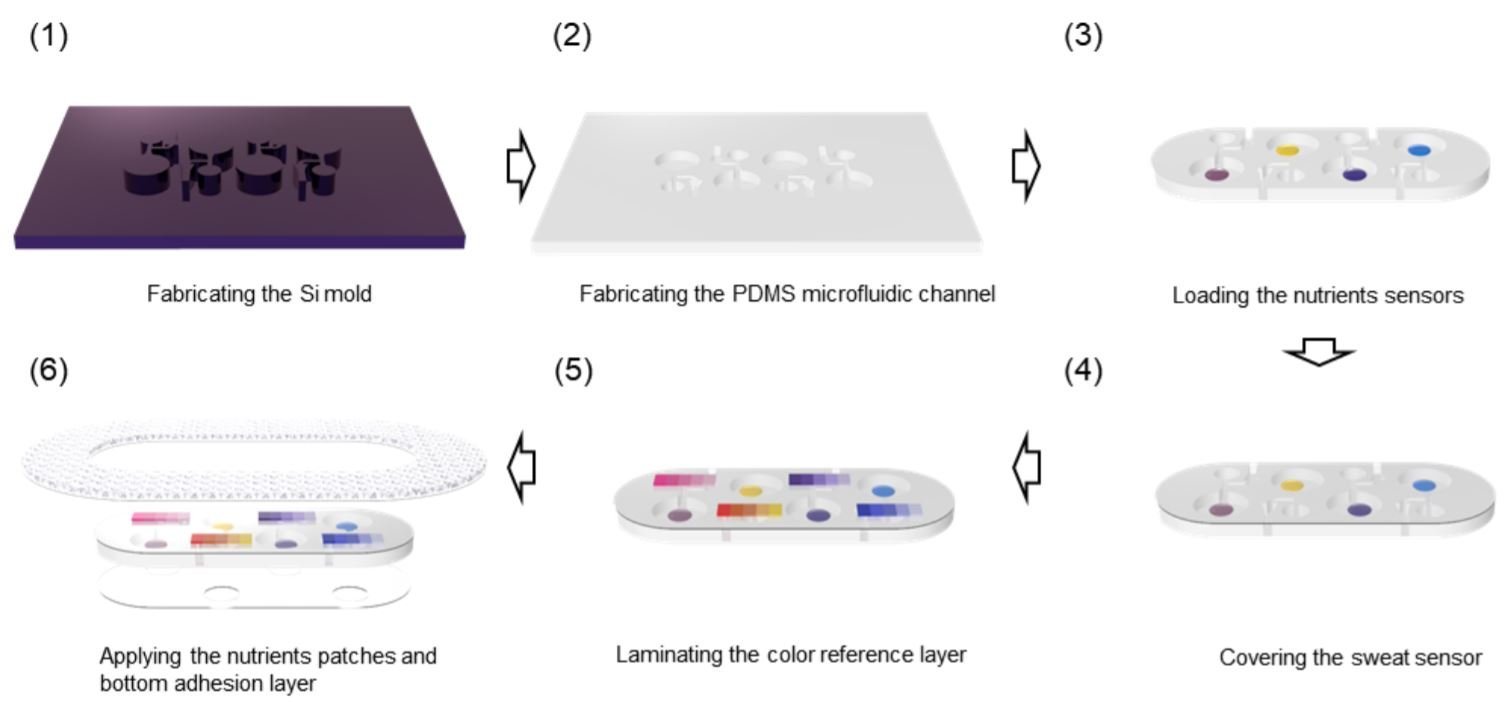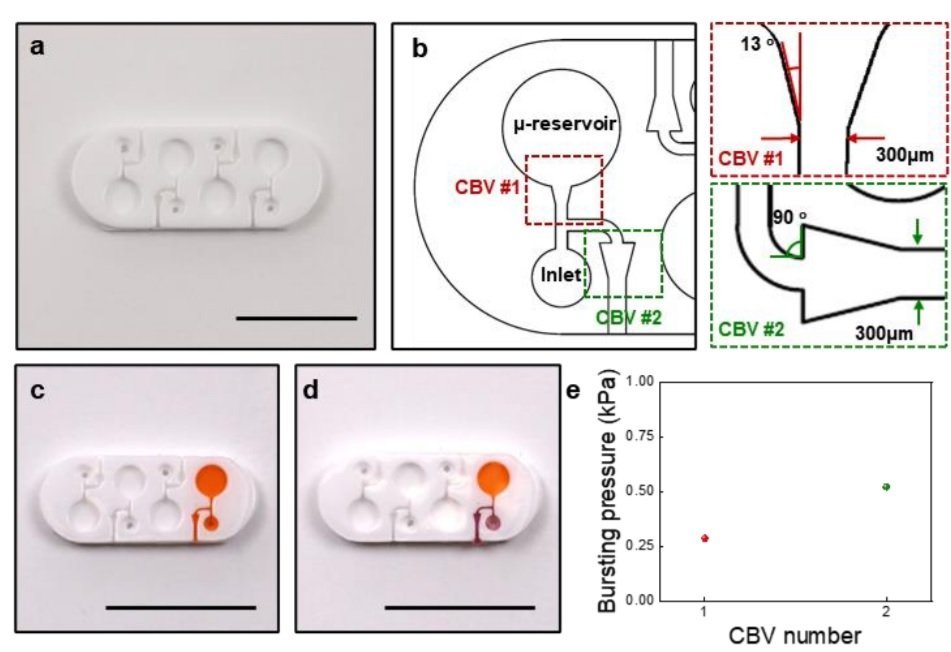
20 Nov Wearable microfluidics for colorimetric sweat analysis and delivery of nutrients through the skin
Wearable microfluidics is a hot topic of research with a promising potential for commercialization. Small and skin-friendly microfluidic devices can collect sweat from the skin and deliver it through a network of microfluidic channels to microchambers where they can undergo a chemical or biological reaction resulting in a readout. In this week’s research highlight, we will introduce a recently developed wearable microfluidic analysis and delivery chip for colorimetric analysis of vitamin C, zinc, calcium, and iron in sweat.
“Eccrine sweat is a potentially attractive class of biofluid for monitoring purposes due to the ability to capture sweat easily and noninvasively from nearly any region of the body using skin-integrated microfluidic technologies. Here, a miniaturized system of this type is presented that allows simple, rapid colorimetric assessments of the concentrations of multiple essential nutrients in sweat, simultaneously and without any supporting electronics – vitamin C, calcium, zinc, and iron. A transdermal patch integrated directly with the microfluidics supports passive, sustained delivery of these species to the body throughout a period of wear. “, the authors explained.

Reproduced from Joohee, K., et al. Adv. Sci., 2103331 (2021). under Creative Commons Attribution 4.0 International License.
The working mechanism of the microfluidic device
The microfluidic chip proposed for the analysis of nutrients in sweat consists of an inlet that collects the sweat from the skin. The inlet port nearly covers 10 sweet glands and will deliver the sweat to a micro reservoir for colorimetric analysis due to the pressure created by the sweat glands as well as capillary action. The capillary bursting valves embedded in the microchannels prevent excess sweat from entering the microchamber by guiding them to an outlet. Four microfluidic devices with the same pattern are on each chip for measuring vitamin C, calcium, zinc, and iron. The PDMS microfluidic channels and are microfabricated using conventional photo and soft lithography techniques and are sandwiched between a skin-friendly adhesive layer and a sweat sensor cover layer. The next layer includes color reference markers to aid with quantitative analysis of the colorimetric results. The nutrient patch serves as a reservoir for the relevant nutrients. After the user is informed of the insufficient nutrient level by visual inspection of the microfluidic chip, the blocking layer can be removed to release the nutrients to get absorbed through the surface of the skin and eventually the bloodstream. Chemical enhancers were added to the nutrients to increase the permeability of the skin. The small size of the microfluidic chip (10 mm by 5 mm) makes it convenient for the user to wear without experiencing difficulty.

Reproduced from Joohee, K., et al. Adv. Sci., 2103331 (2021). under Creative Commons Attribution 4.0 International License.
After delivering the sweat to the microchambers, it undergoes chemical reactions resulting in a color change. The color change could be correlated to quantitative values using the color reference markers for each nutrient.

Reproduced from Joohee, K., et al. Adv. Sci., 2103331 (2021). under Creative Commons Attribution 4.0 International License.
“This platform can be easily expanded to include other nutrients such as copper and certain amino acids through suitable modifications of established assay kits, thus establishing the basis for comprehensive nutrition panel on your skin. Future studies will examine the dependence of sweat rate and sweat loss on these and other species. The simplicity of these wearable devices, their capabilities in real-time colorimetric readout, and their applicability in home settings suggest broad potential for a data driven, personalized approach to healthy nutritional intake.“, the authors concluded.
Figures are reproduced from Joohee, K., Yixin, W., Luan H. et al. A Skin-Interfaced, Miniaturized Microfluidic Analysis and Delivery System for Colorimetric Measurements of Nutrients in Sweat and Supply of Vitamins Through the Skin. Adv Sci, 2103331 (2021) under Creative Commons Attribution 4.0 International License
Read the original article: A Skin-Interfaced, Miniaturized Microfluidic Analysis and Delivery System for Colorimetric Measurements of Nutrients in Sweat and Supply of Vitamins Through the Skin


